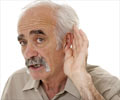Eur Arch Otorhinolaryngol 2020 Feb 01
Cochlear implant magnet dislocation after MRI: surgical management and outcome.
Leinung M, Loth A, Gröger M, Burck I, Vogl T, Stöver T, Helbig S
An increasing number of cochlear implant (CI) users is examined by magnetic resonance imaging which may cause the displacement of the implant magnet. ...
Read More
Source: PubMed
J. Acoust. Soc. Am.
Accommodation of gender-related phonetic differences by listeners with cochlear implants and in a variety of vocoder simulations.
Winn MB
Speech perception requires accommodation of a wide range of acoustic variability across talkers. A classic example is the perception of "sh" and "s" f ...
Read More
Source: PubMed
Int. J. Pediatr. Otorhinolaryngol.
A survey of pediatric cochlear implant recipients as young adults.
Ganek HV, Feness ML, Goulding G, Liberman GM, Steel MM, Ruderman LA, Papsin BC, Cushing SL, Gordon KA
To identify the influence of pediatric cochlear implantation on long term communication modality, education, and income. ...
Read More
Source: PubMed
Sci Rep
Electro-Haptic Enhancement of Spatial Hearing in Cochlear Implant Users.
Fletcher MD, Cunningham RO, Mills SR
Cochlear implants (CIs) have enabled hundreds of thousands of profoundly hearing-impaired people to perceive sounds by electrically stimulating the au ...
Read More
Source: PubMed
J. Speech Lang. Hear. Res. 2020 Jan 31
The Acquisition of Productive Plural Morphology by Children With Hearing Loss.
Davies B, Xu Rattanasone N, Davis A, Demuth K
Purpose Normal-hearing (NH) children acquire plural morphemes at different rates, with the segmental allomorphs /-s, -z/ (e.g., cat-s) being acquired ...
Read More
Source: PubMed










